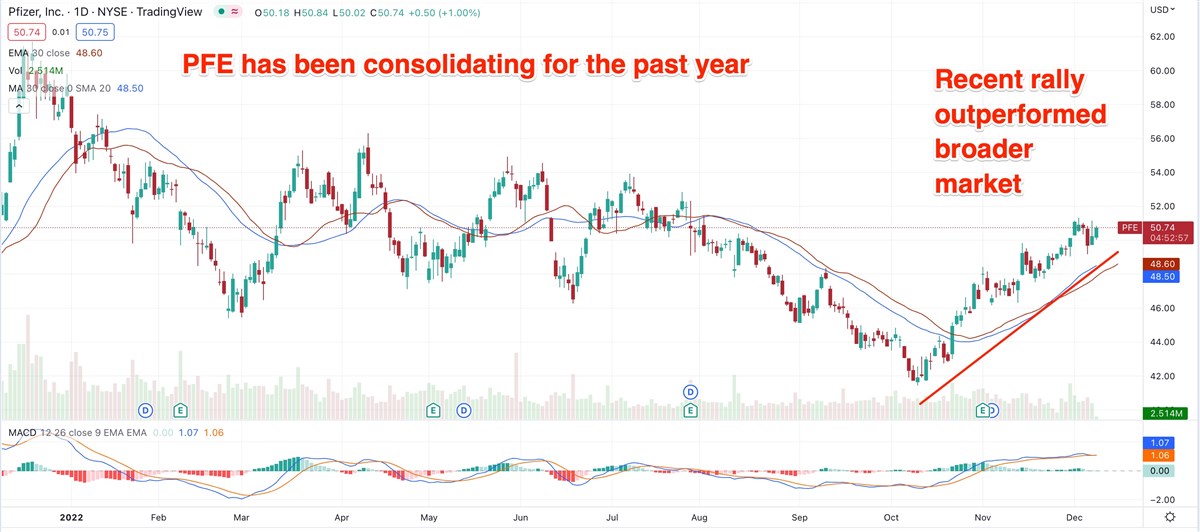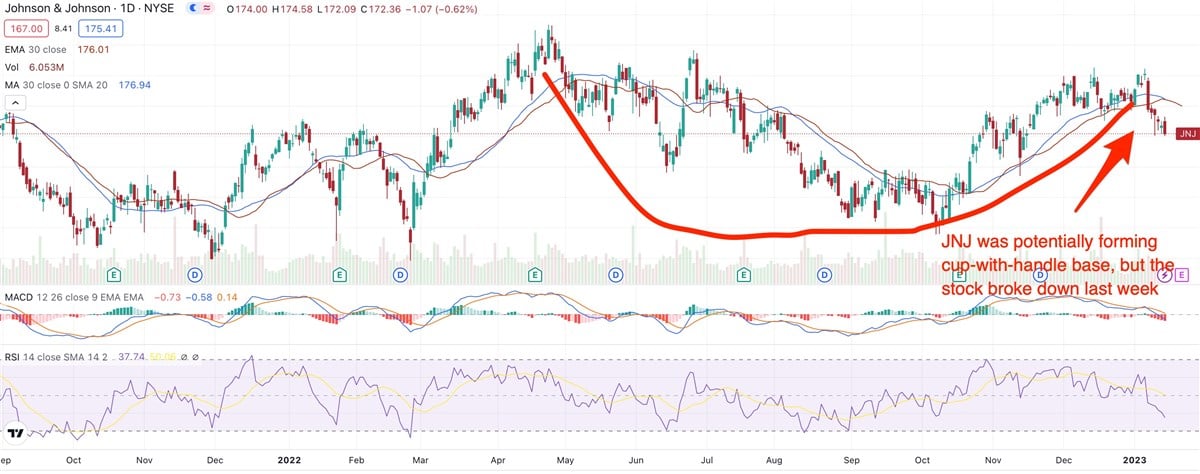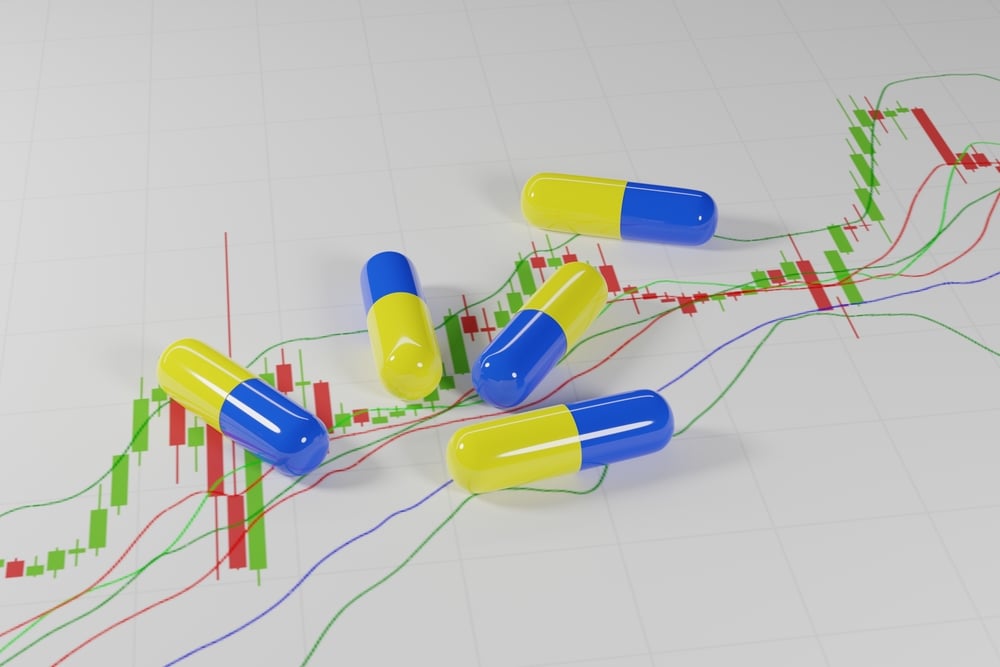Large-cap pharmaceuticals Pfizer Inc. (NYSE: PFE) and Johnson & Johnson (NYSE: JNJ) are among stocks outperforming the broader market in the past year, particularly in the past three months. Both stocks are S&P 500 components, so a comparison with that index offers an appropriate benchmark for pharmaceutical stocks.

MarketBeat.com – MarketBeat
While the pharma industry has languished, these companies offer examples of company-specific news that can boost prices even amid wider malaise.
Pfizer is up 6.69% in the past month and 9.78% in the past three months. Shares closed Wednesday at $50.24, a gain of $0.53 or 1.07%. That’s compared to the S&P’s return of 3.34% in the past month and decline of 1.15% over the past three months.
On Wednesday, a U.S. district judge dismissed tens of thousands of claims that Pfizer, along with GSK PLC (NYSE: GLC) and Sanofi SA (NASDAQ: SNY), pertaining to heartburn treatment Zantac, caused cancer. The judge ruled that the claims failed to show legitimate links between Zantac and several types of cancer, including bladder, gastrointestinal, esophageal, pancreatic and liver cancers.
There are still more cases pending around the country, but Wednesday’s ruling means remaining litigation will occur in various state courts; the number of cases has dropped significantly.
Pfizer had more good news Wednesday. According to the company, the U.S. Food & Drug Administration accepted for priority review a Biologics License Application (BLA) for a respiratory syncytial virus (RSV) vaccine candidate submitted by Pfizer. The treatment should prevent respiratory tract disease caused by that particular virus in people ages 60 and older.
Priority review designation by the FDA cuts the standard BLA review time period by four months.
In a statement issued by Pfizer, Annaliesa Anderson, senior vice president and chief scientific officer of vaccine research and development, said, “With no RSV vaccines currently available, older adults remain at risk for RSV disease and potential severe outcomes, including serious respiratory symptoms, hospitalization, and in some cases, even death.”
She noted that the FDA’s acceptance of the BLA for the company’s vaccine candidate is an important regulatory milestone.
Pfizer has consolidated for the past year after peaking at $61.70 in December 2021.
Johnson & Johnson also Outpaces Broader Market
Johnson & Johnson, in addition to its pharmaceutical business, also diversifies into various health care pursuits.
That stock is up 3.08% in the past month, 8.67% in the past three months and 6.17% year-to-date. Shares closed $0.61 higher Wednesday, at $177.17.
Johnson & Johnson has had some recent news that helped boost the stock price. Last month, the company said it would acquire cardiovascular device maker Abiomed Inc. (NASDAQ: ABMD) for nearly $17 billion. The deal will likely accelerate J&J’s presence in a growing area, but J&J’s existing growth in the device space has lagged behind other areas.
The device area has attracted investor interest now, with Ra Medical Systems Inc. (NYSE: RMED) rising an almost astonishing 97.55% in the past week and 43.20% in the past month.
In September, privately held Catheter Precision announced a definitive merger agreement with Ra, which makes lasers for use in the treatment of vascular and dermatological ailments. If completed, the deal would result in a combined publicly traded company focusing on cardiac electrophysiology, or the diagnosis and treatment of conditions affecting the electrical activity of the heart muscle.
Lower Price Targets
Despite recent stock price increases, analysts are somewhat mixed when it comes to the near-to-medium-term outlook for J&J. Since the company’s last earnings report in mid-October, five analysts lowered their price targets on the company.
MarketBeat data show the consensus rating is “hold,” with a price target of $181.83, a potential upside of 2.74%. That’s down from a price target of $184.25 a month ago.
Johnson & Johnson’s chart reveals a cup-shaped pattern that began forming in late April. Currently, a possible buy point is above $188.69. So far, the correction has declined 15% and hasn’t undercut prior structure lows.
Since the 2020 COVID-19-driven market meltdown, J&J has formed a series of bases with higher highs as well as higher lows. Each time, it has failed to rally more than 20% before pulling back again.






